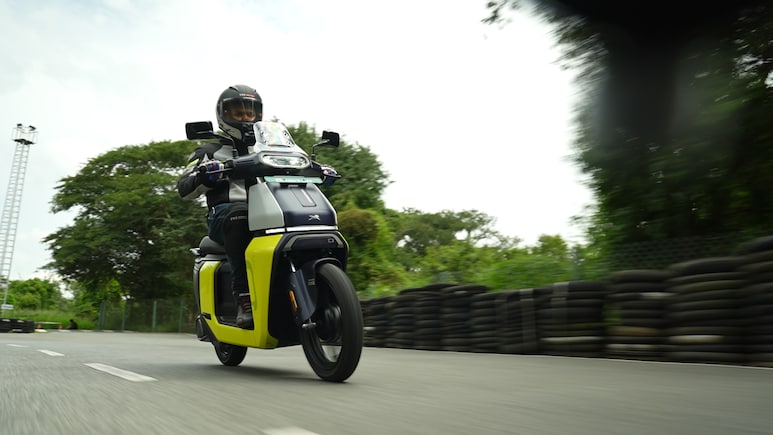
Hosur: One in five scooters sold in India is an electric. TVS Motor Company enjoys over 20 per cent market share in EVs. Suffice it to say that the iQube has been a runaway success. What's next for TVS Motor Company? In comes Orbiter - positioned before the iQube - and it is aimed to carve deeper inroads. Does TVS Orbiter make sense at Rs 1 lakh (ex-showroom)? Let's explore the new, entry-level offering EV:
TVS ORBITER EV: DESIGN AND FEATURES
Orbiter looks fresh and appealing, in fact a massive departure from any TVS offering. Straight lines, solid panels, monolith appeal and a palette of funky colours truly define the Orbiter. The fit and finish look satisfactory, barring the rear-end and fenders, which look abruptly chopped off. All LED lights are on offer. Sleek streak of LED DRLS at the rear and front fit nicely into the upright structure.
The 5.5-inch reverse LCD packs plenty of information for daily riding. Digits are clear, and features like navigation, phone pairing and crash alert are available. Orbiter EV also gets a cruise control feature which felt smooth and seamless during the test run. It can be engaged at speeds over 23 kmph, and be disengaged with the twist of the throttle or pulling the brakes. Orbiter EV also gets hill hold function, which I'm sure will be a boon in flyovers, inclines and hilly terrains.
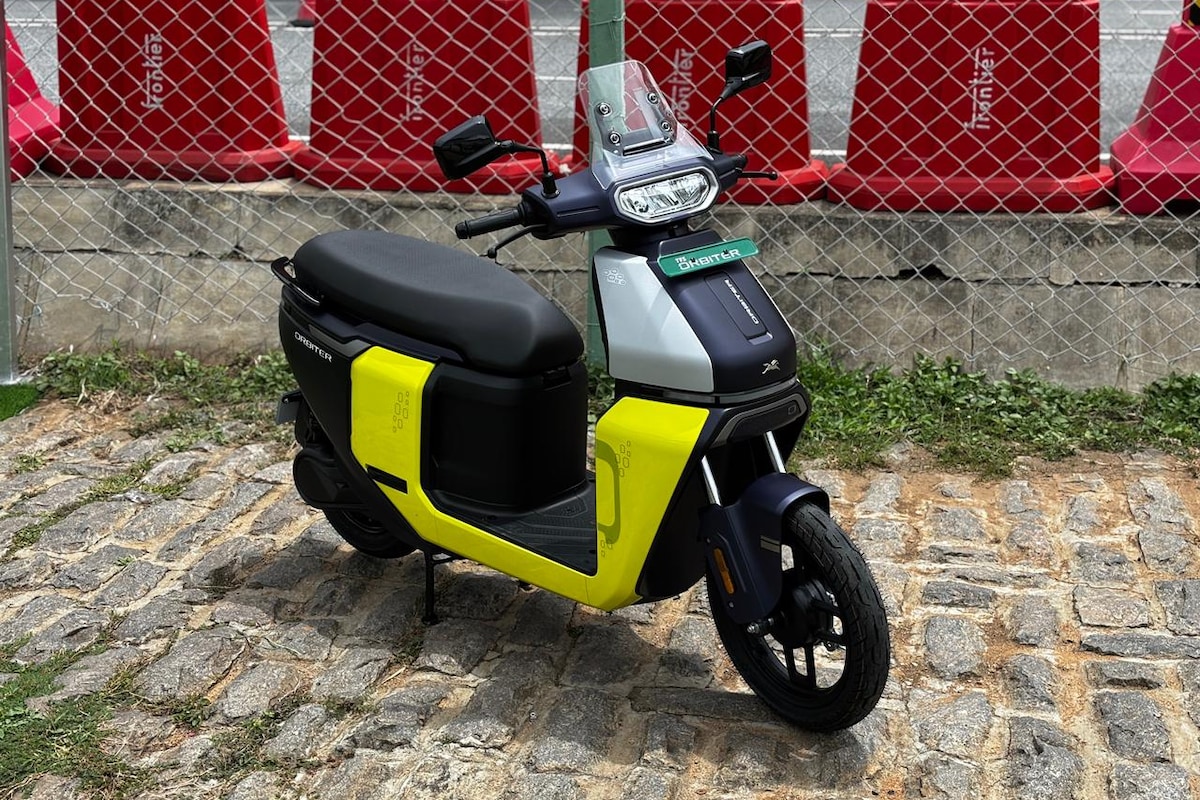
TVS ORBITER EV: EROGONOMICS AND DIMENSIONS
Riding on 14-inch front and 12-inch rear wheels, the Orbiter feels substantially large with a 1330 mm wheelbase. It's lighter than iQube though. Compared to the iQube 3.1 variant with which Orbiter shares its battery, the latter weighs 5 kilos lighter at 112 kg. The ground clearance is 169 mm, roughly 12 mm more than the iQube. The rider is seated upright with narrow handlebars. Towing it in or out of parking spaces or tip-toeing for a 5.2-foot individual should be easy. Footboard space is decent and underseat storage of 34 litres can accommodate two half-faced helmets. There is a USB charging point in the front apron along with a deep pocket to throw in mobile, wallet or handy items.
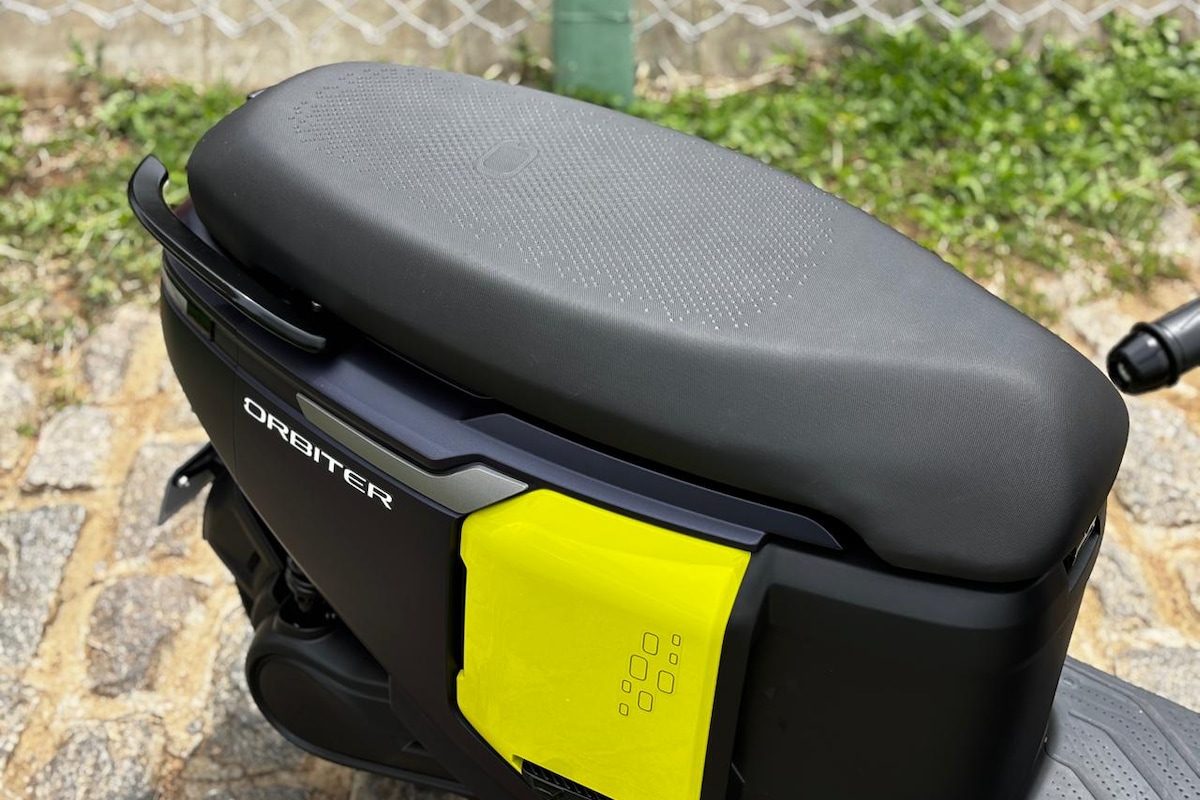
TVS ORBITER EV: BATTERY, CHARGING AND MOTOR
The 3.1 kWh battery pack promises 158 km (IDC range). Similarly specced iQube has a claimed range of 123 km. Several factors contribute to the difference. The iQube is heavier, and faster, thanks to a much more powerful motor. The BLDC hub motor used in Orbiter generates 2.5 kW, compared to a 4.4 kW PMSM used in iQube. Realistically speaking, in eco mode where speed is capped to 40 kmph, Orbiter should offer up to 115 kilometres on a single charge and at 68 kmph on city mode, the range drops to 90 kilometres. The 10-80% charging time using a 650 Watt charger is roughly 4 hours.
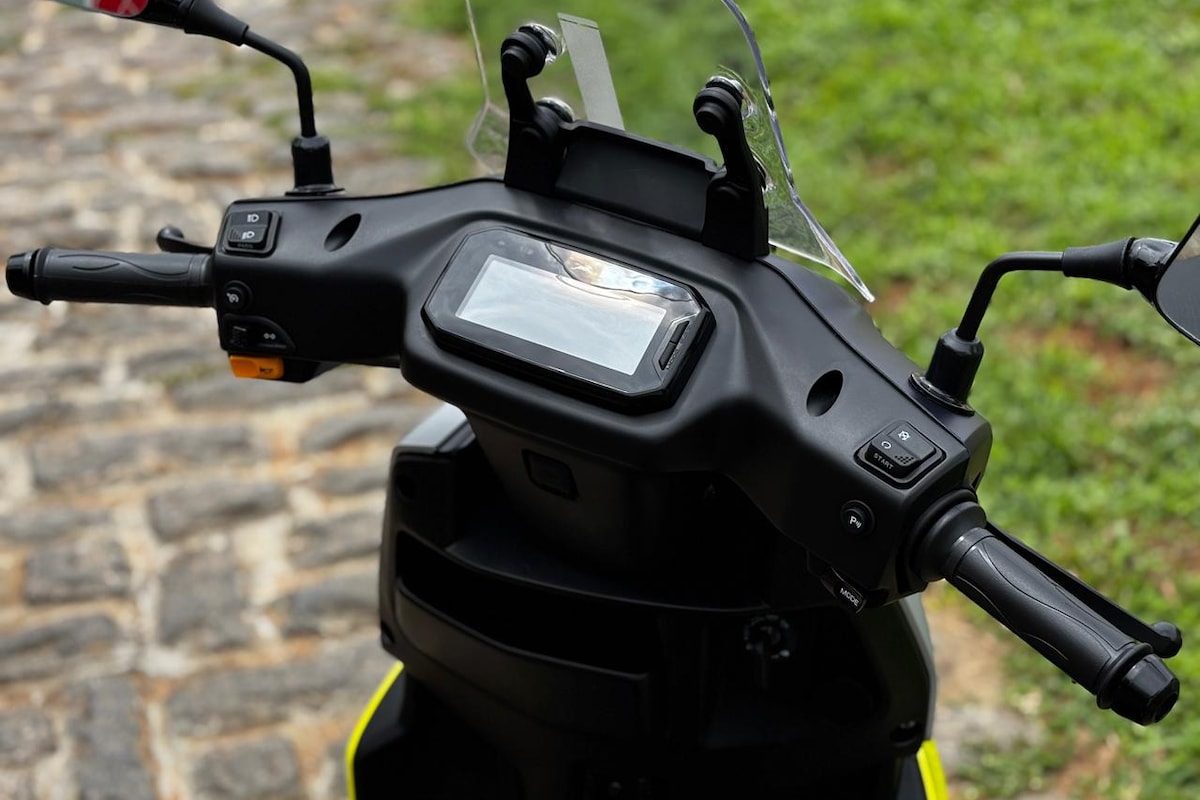
TVS ORBITER EV: RIDE EXPERIENCE
The scooter is simple, and the ride is humble. Orbiter can maintain 50 kmph at ease. Speeds up to 60 kmph are attainable, beyond which it feels stretched. It may not be exciting to ride but it solves the purpose of frugal commuting in cities and towns. Running cost of 25-30 paise/kilometre, Orbiter serves the utilitarian purpose while being simple and fuss-free.
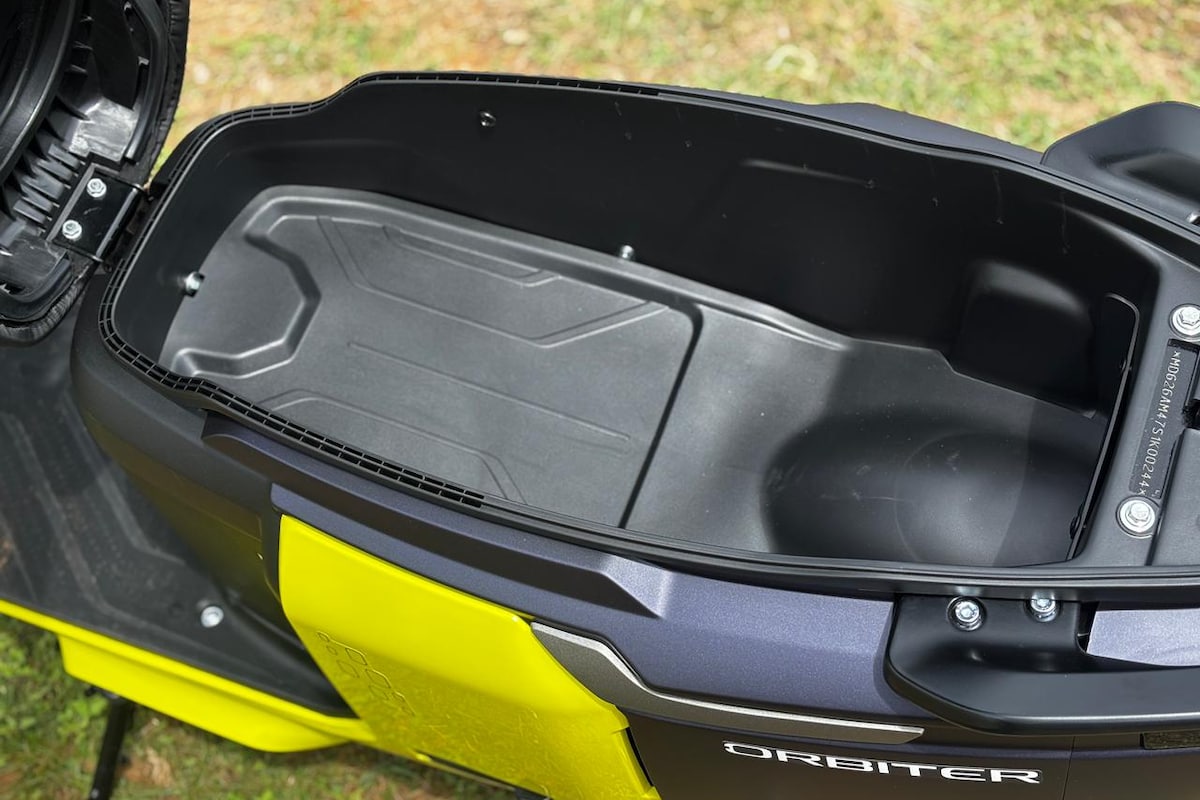
The throttle response is smooth and predictable. The BLDC hub motor is eerily silent, which may divide opinions. The scooter is light, flickable and easy to manage. Using a 14-inch wheel at the front does compromise some amount of agility but it is not a deal breaker.
Orbiter and iQube use the same suspension set-up, save for the fact that the former has longer stroke length due to a bigger front wheel. Telescopic front suspension and rear twin coil springs are softly sprung, doing a light work of road undulations are low speeds. The flat seat is sufficiently large and accommodating with well-stitched contours.
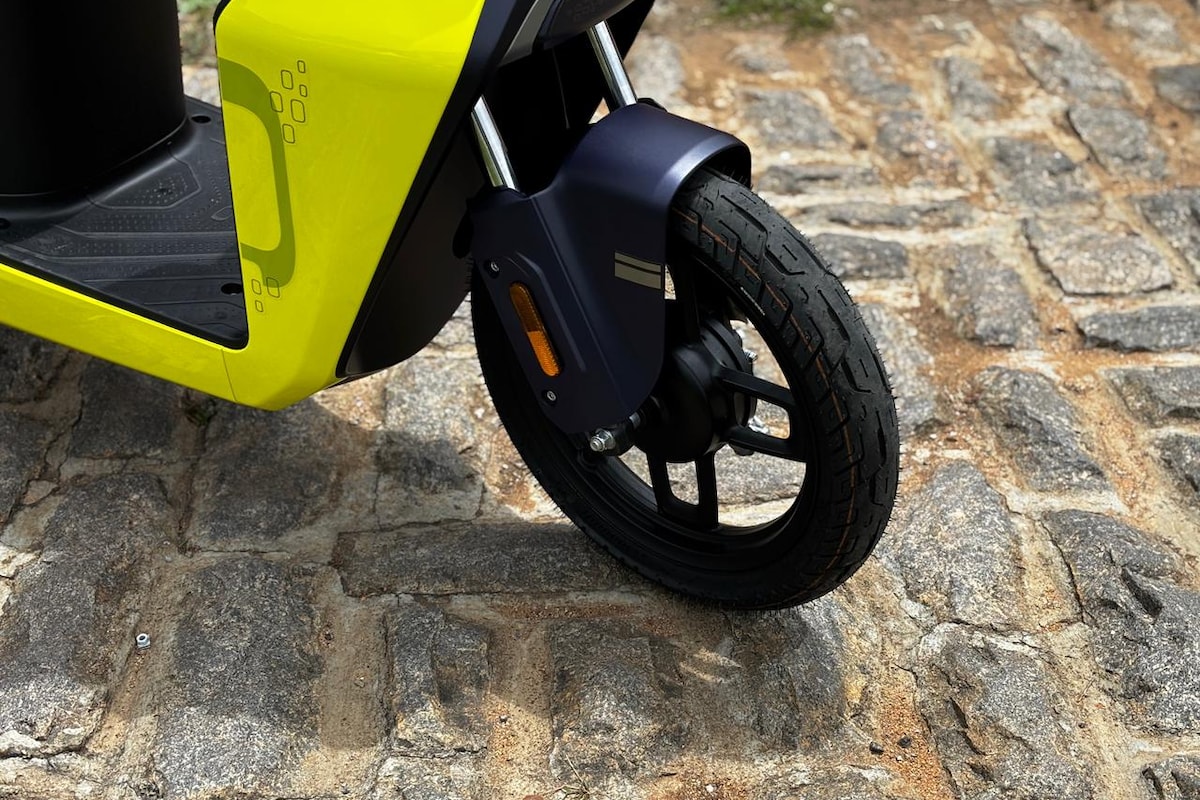
Orbiter uses drum brakes at either end and they feel sufficiently grippy at city speeds. While the disc at the front could have been considered, it also remains an affordability trade-off. The feedback on the lever is assuring, and unless panic brakes at high speeds are applied, drum brakes should be more than handy.
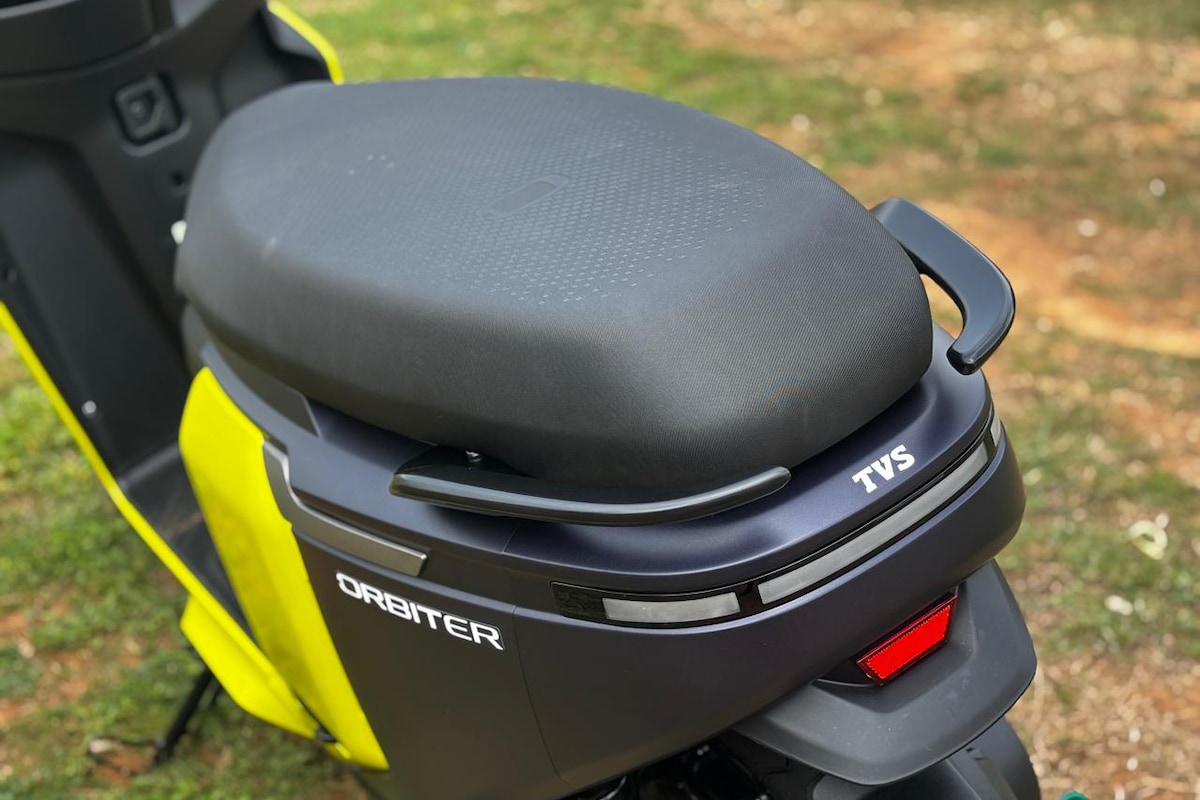
TVS ORBITER EV: VERDICT
Orbiter EV is priced at Rs 1 lakh (ex-showroom), staying clear of the iQube 3.1 variant by Rs 10,000-12,000. While the price difference may not appear large on paper, Orbiter with lower cost of running than iQube will stretch the gap with better total cost of ownership. Orbiter looks fresh, attracts Gen Zs to Late Boomers and still remains easy to ride. Safe to say, TVS Motor Company has tried to make a simple thing look fashionable and they have done a rather good job.
Track Latest News Live on NDTV.com and get news updates from India and around the world
